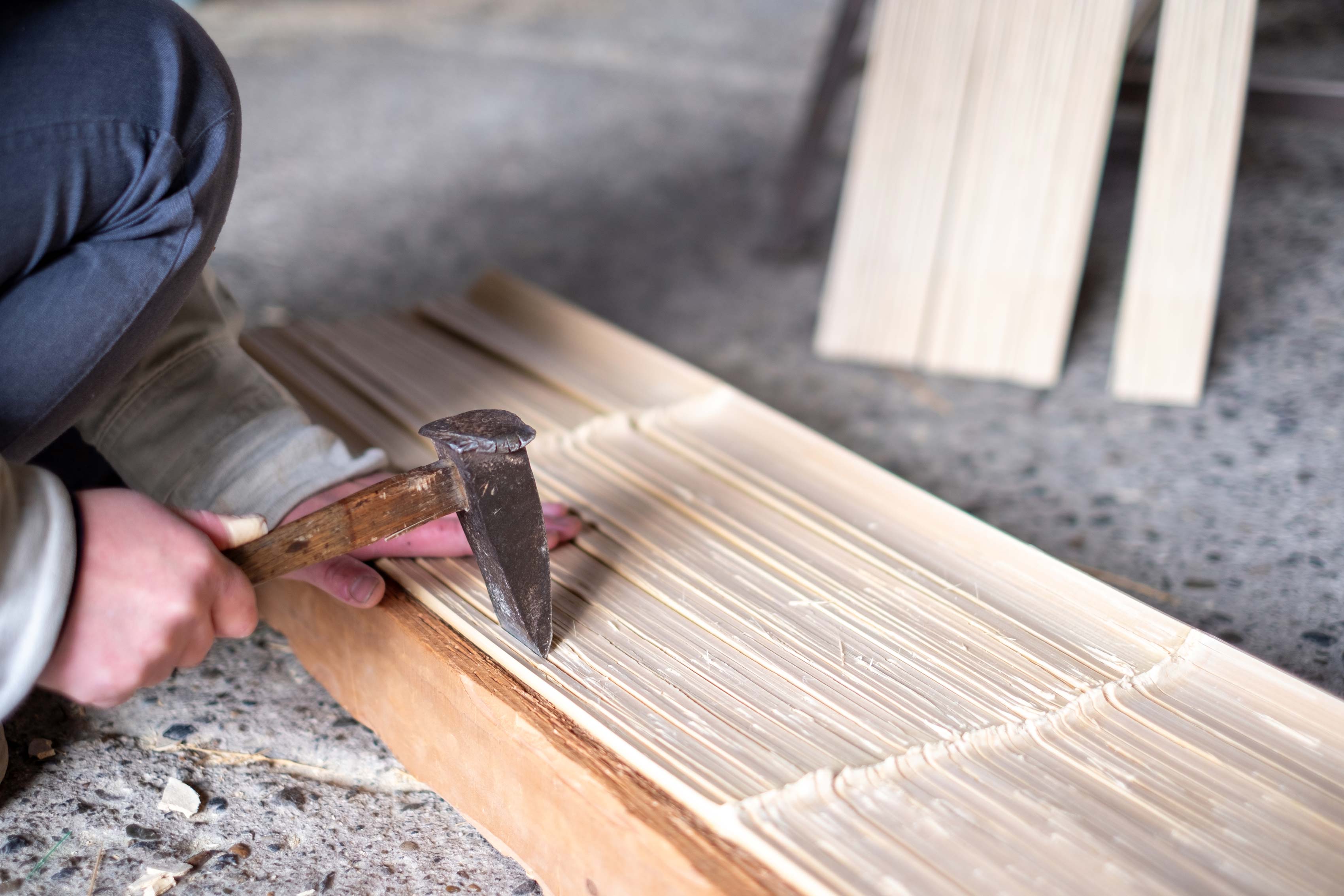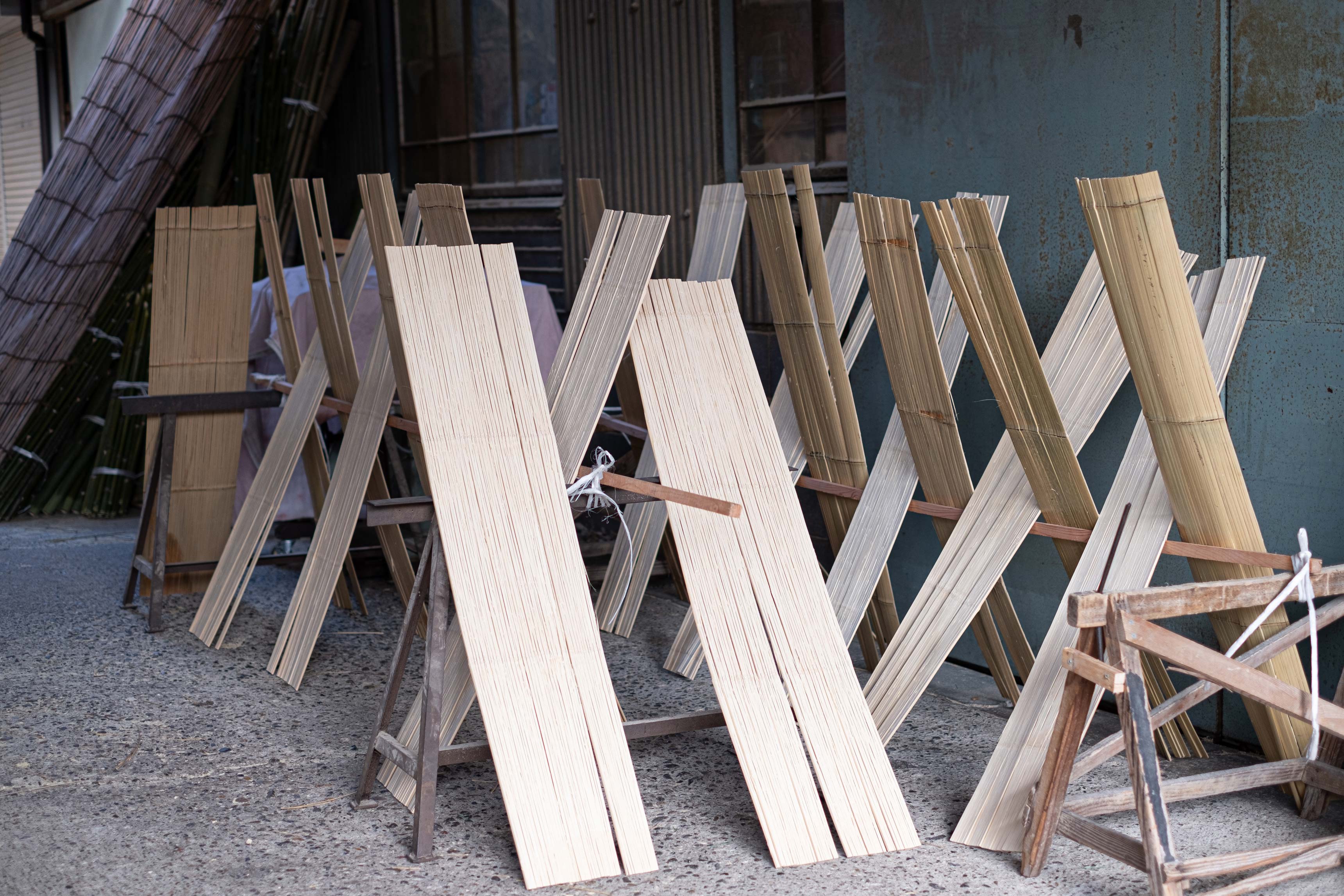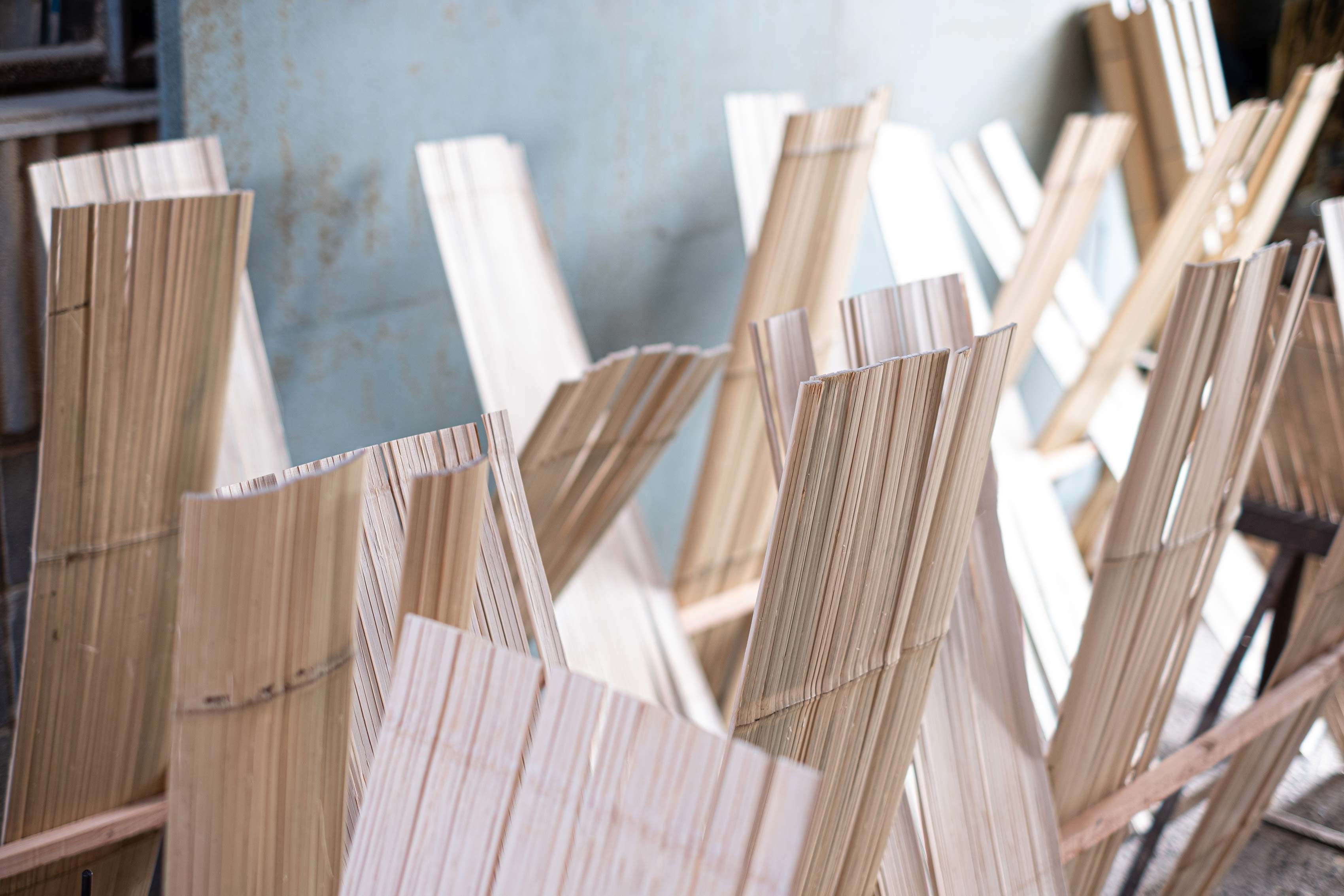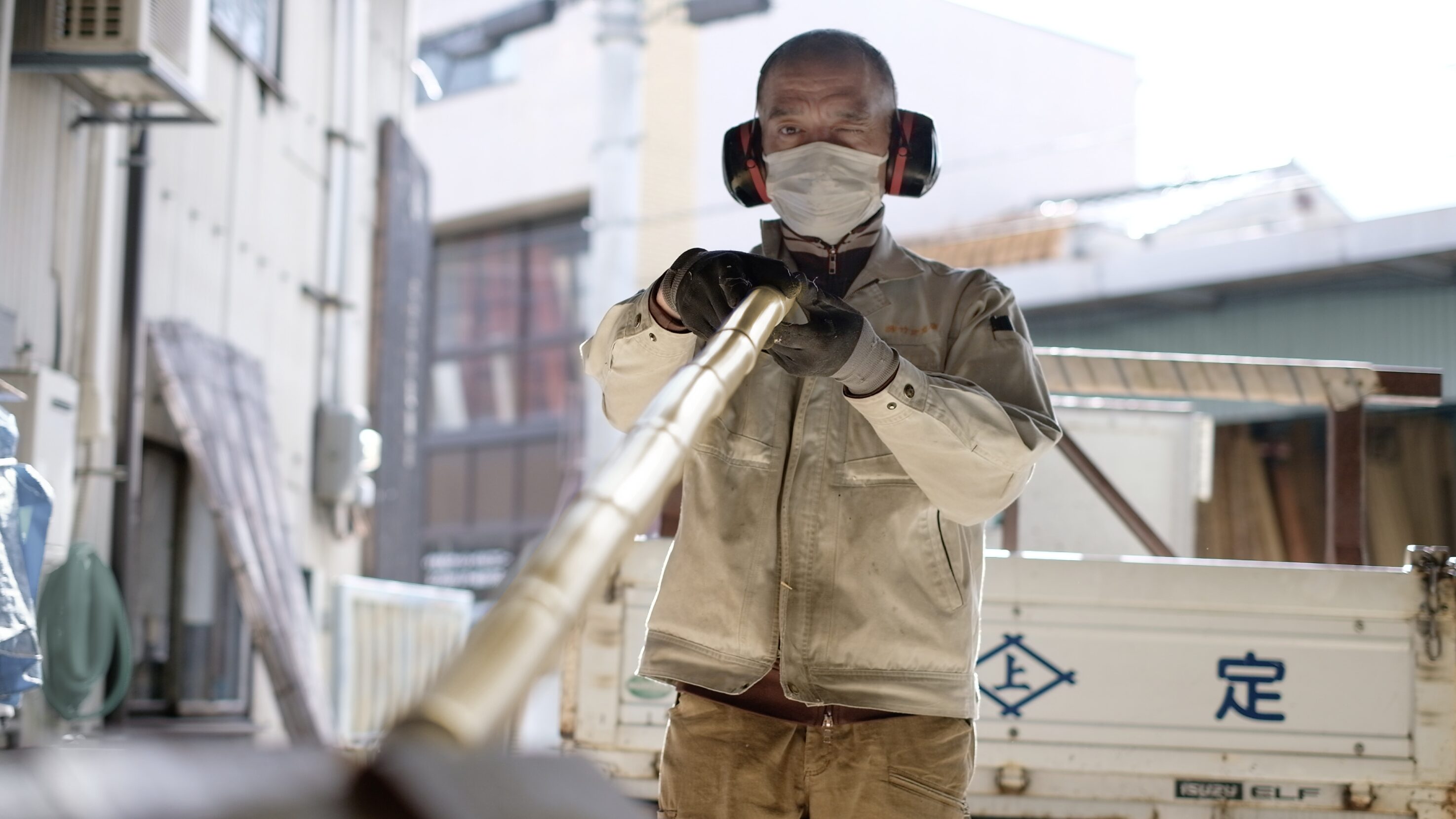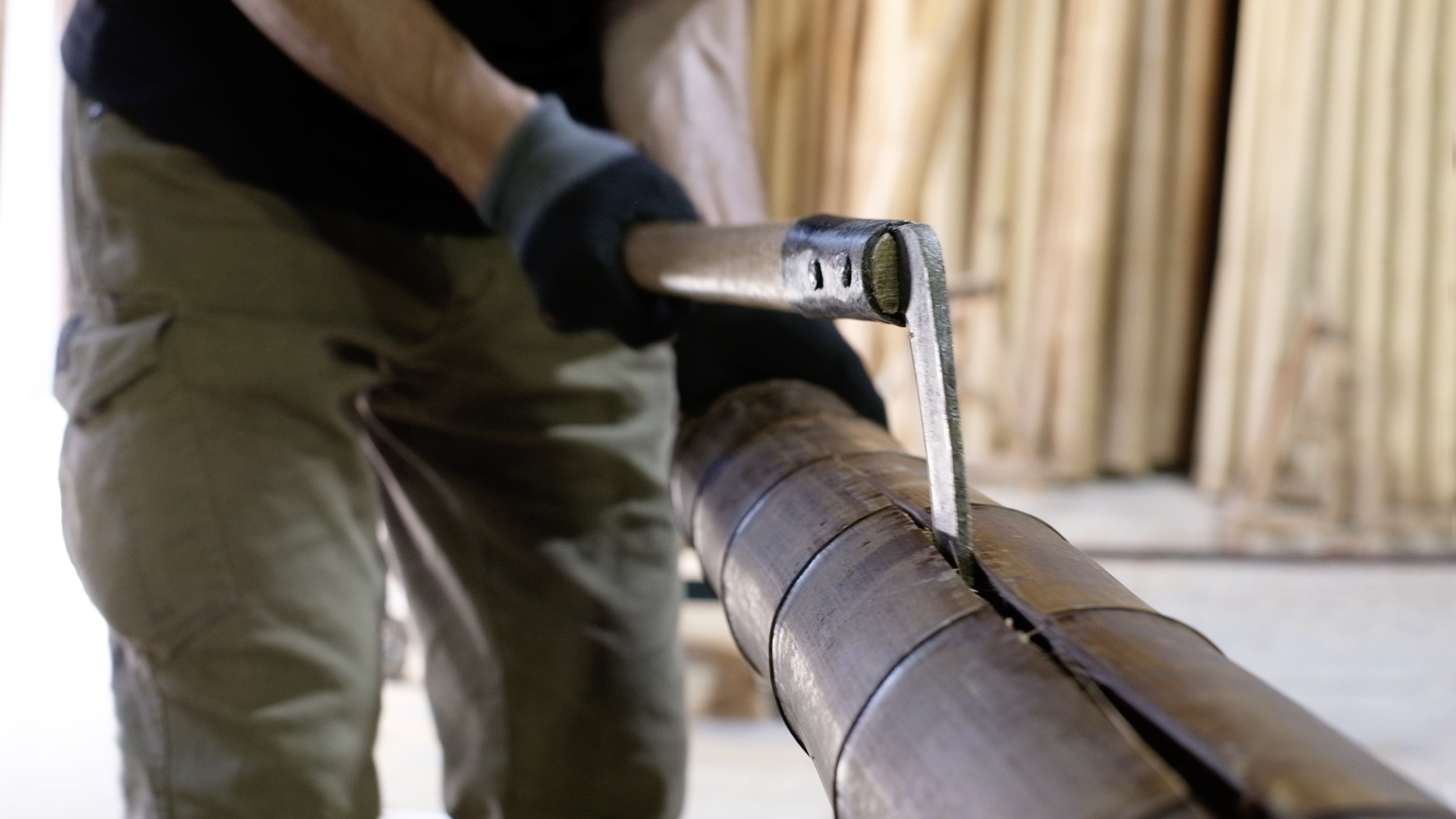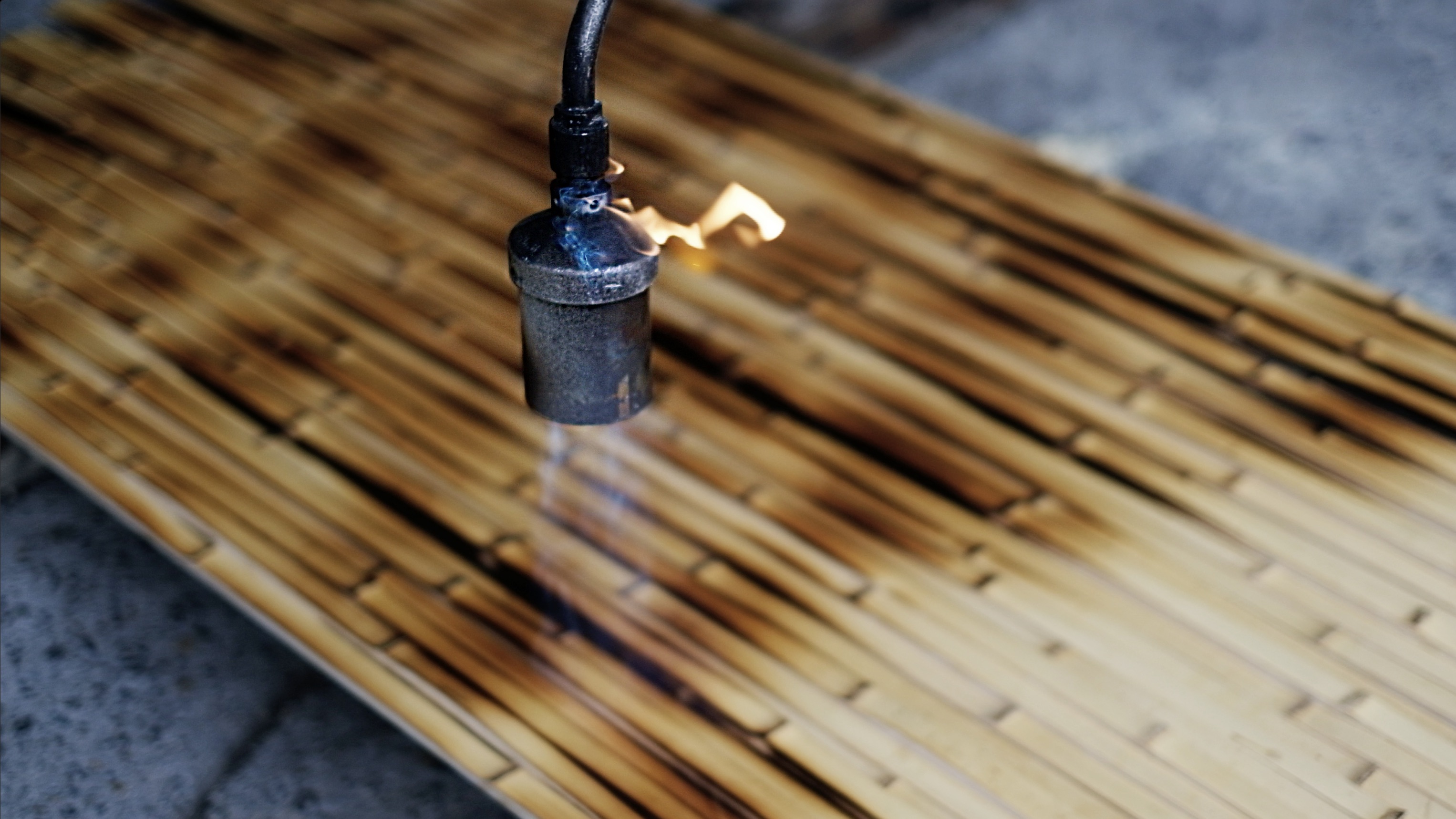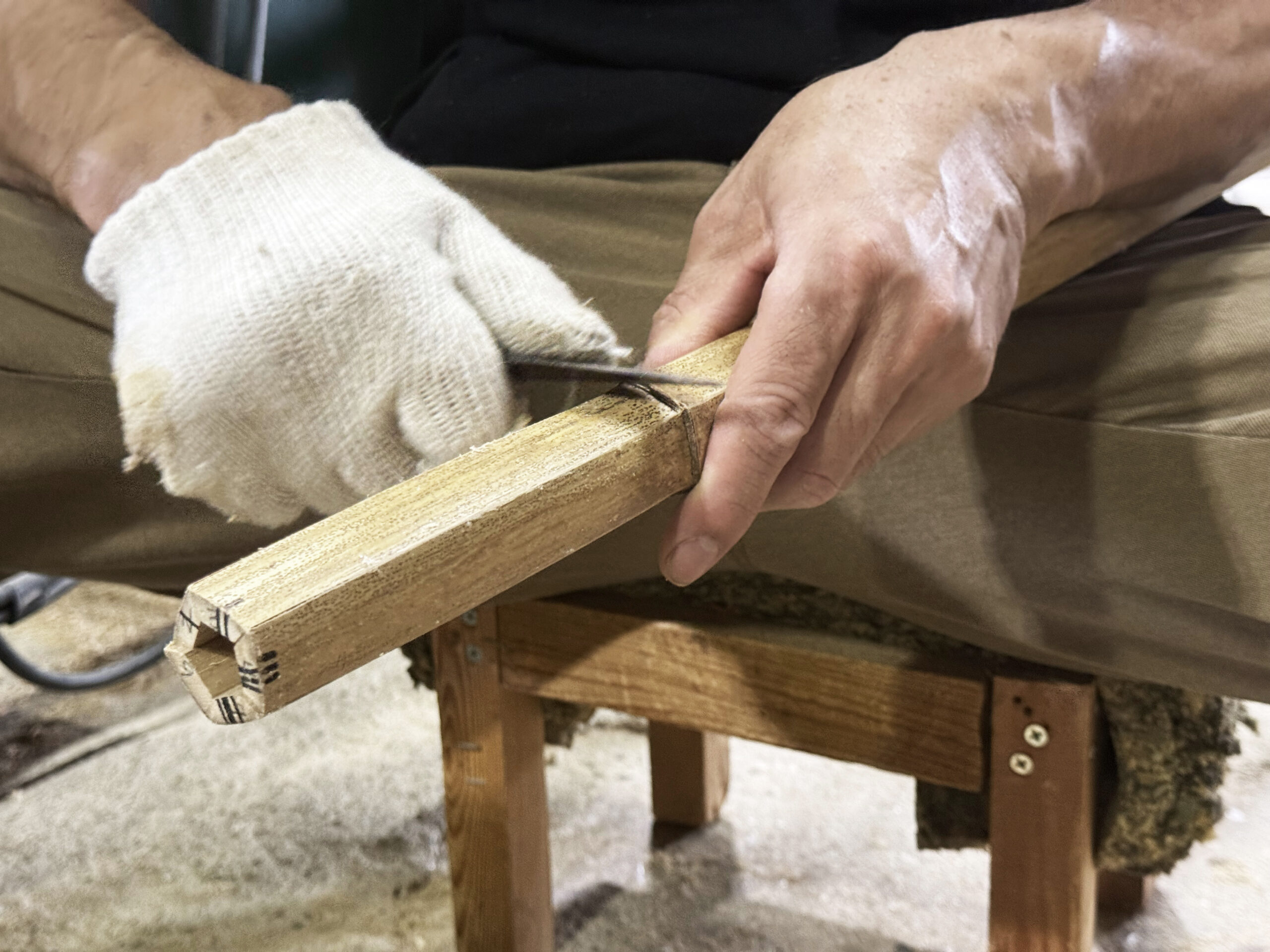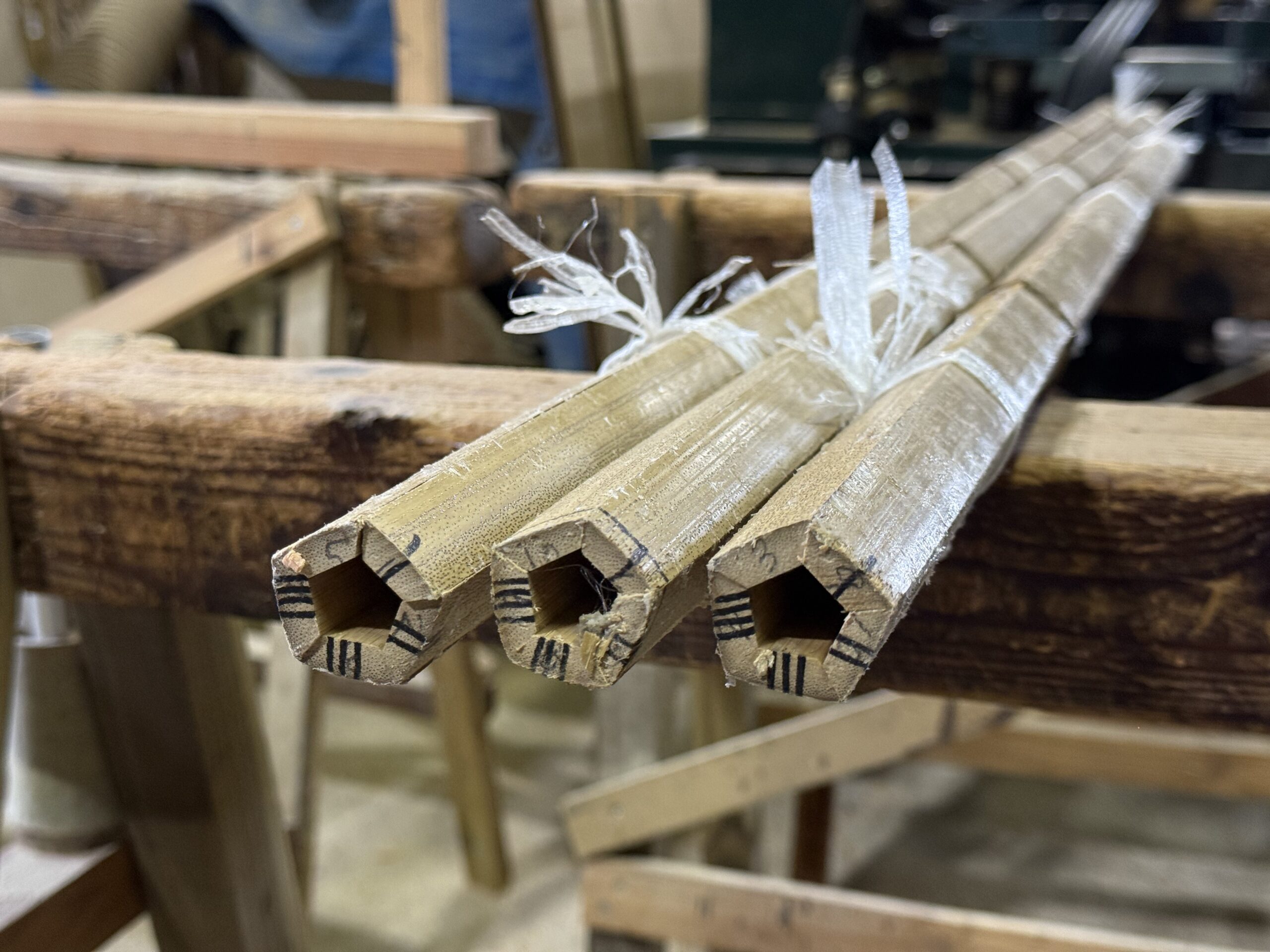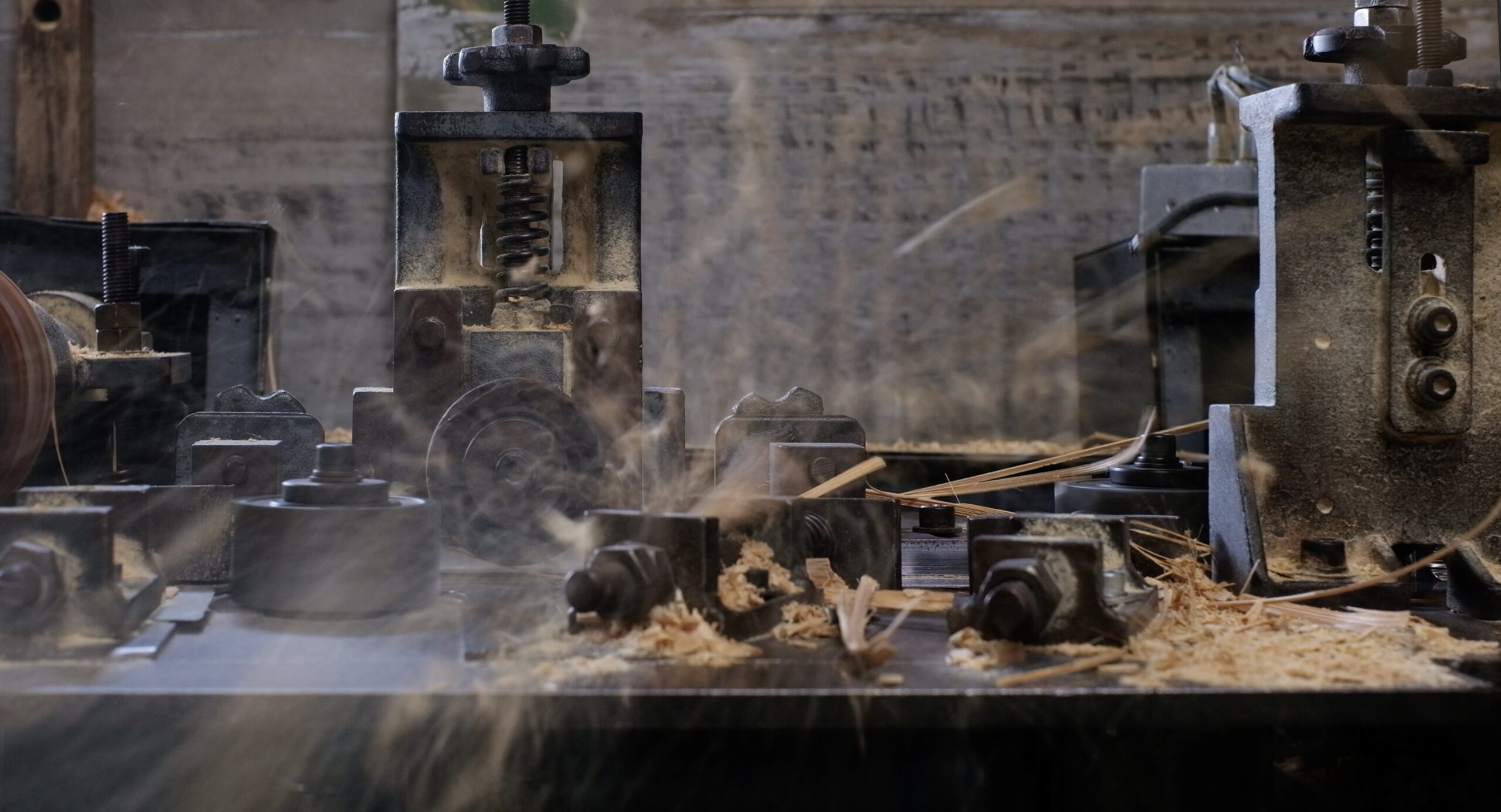Hammer-Split Processing
The process of making Hishigi bamboo (ひしぎ) is intricate and requires skill, patience, and precision. It begins with a lengthwise cut called “sewari” (背割), which helps ensure an even split. Once this initial cut is made, the nodes inside the bamboo are removed using a metal rod, allowing the hollow structure to take shape.
Next, small incisions are made at both ends of the bamboo to guide and control the splitting process. Using a wooden mallet, the bamboo is carefully cracked along its entire length and circumference. This step demands a delicate balance—too much force can cause the bamboo to break unevenly, while too little can result in an inconsistent split.
As the bamboo starts to open, a specialized hammer is used to further refine the shape. Additional incisions help flatten the stalk, but this requires great expertise. If the cracks are too deep or too many, the bamboo may fall apart; if they are too shallow, the surface will not become uniformly flat.
Finally, the remaining unevenness from the nodes is carefully trimmed and smoothed. Each step of this process is performed with great attention to detail, ensuring that the final product is both functional and beautifully crafted.



